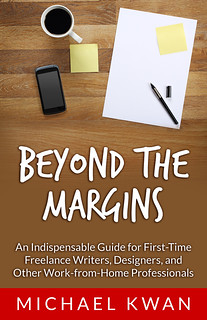This week, I want to take a step back from finance and have a quick look at business. There is a direct relationship between business and finance. And what better example than a restaurant, as this is a business I understand extremely well. I spent 11 years in it and I know it like the back of my hand. This post will also ensure you know exactly why you complain about the price of things at restaurants.
Welcome To Chez Koo
Let’s use a fictional restaurant (Chez Koo) as an example. You go to this place and get greeted by a host. They seat you down. The waiter comes and introduces him or herself, explains the specials and asks if you’d like to start with a drink. The table you’re sitting at has a white table cloth, a white cloth napkin, a candle, a small flower in the middle and a set of cutlery. The waiter comes back and takes your order. They go to give the order to the kitchen and after a bit of a wait, your meal arrives.
Now, let’s say you start with a salad, followed by a sirloin steak as your entree and then a tart for dessert. Although it appears seamless to the outside observer, there is a production chain that extends vast kilometers, and takes hundreds if not thousands of people to produce what arrives at your table. For simplicity’s sake, let’s stick with the inner workings of just Chez Koo.
Restaurants Aren’t Free
Typically, most restaurants follow a model of costing called 30-30-30. This means that 30% of the cost of your meal goes to food costs, 30% goes to the labour and 30% goes to the overheads. That leave 10% for profit.
There are variations of this. There are restaurants like Cactus Club and Earl’s that a costing model of 10-20-30, leaving 40% for profit. These restaurants rely heavily on the branding, convincing the public that they should be willing to pay a premium to eat at a cool place like Cactus Club. In the case of McDonald’s, the costing is a trade secret, but it’s believed to be something like 1-30-50. They do so much volume that they only need to make small margins on their meals. They can charge $1.39 for a “burger,” but it takes millions of people to keep that cost down.
But not Chez Koo. At Chez Koo, we stick with the old model.
And Your Bill Comes To…
The way you arrive at the final price of a meal is simple. Whatever you want your food cost to be, you simply divide 100 by that number. Then, you take that new number and multiply the cost of the ingredients. For example, at Chez Koo our food cost is 30%. We divide 100 by 30, which gives us 3.333. The food cost for the salad, the steak and the tart comes to $10. We multiply $10 by 3.333 and we come to $33.33. Easy eh? Some places like to push the limit a bit and might try a 25-30-30 model.
Lifting The Veil
It’s interesting to look at it. The glitz and glam of the restaurant business does a great job of covering up the not-so glitzy and glamorous money involved. Restaurants go out of business all the time, and with profit margins so low, it’s easy to see why. The idea of simply charging more is the same as printing more money to boost the economy. You have to persuade people of its value and as it stands, people in this day and age are finicky enough as it is.
The next time you complain about the prices at a restaurant, think to yourself, “If I owned this place and I wanted to carve a bit more for profit, would I skimp on the service, the food or the overhead?” It’s not so easy when you’re in the shoes of the Chez Koo owner.






Recent Comments